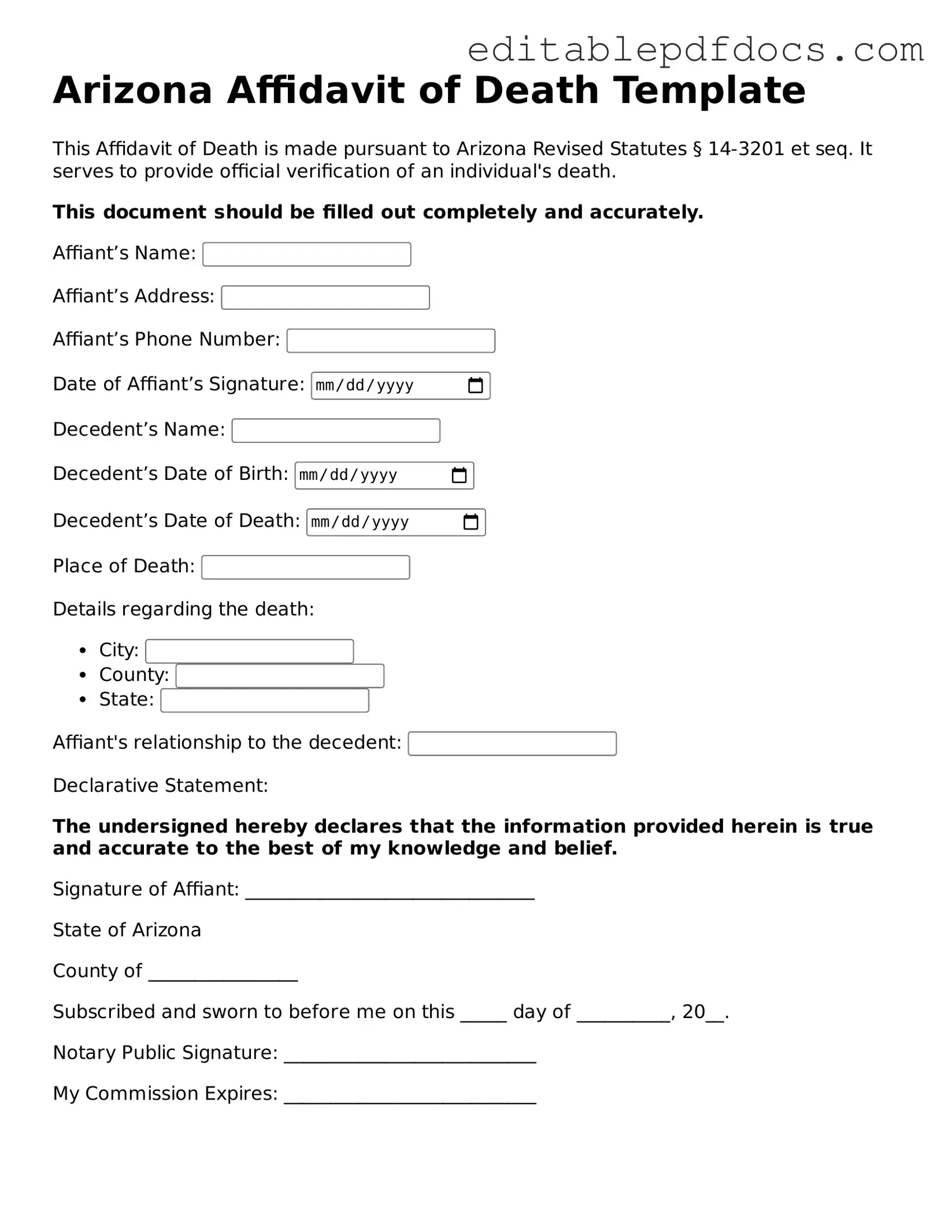Affidavit of Death Document for Arizona
The Arizona Affidavit of Death form is a legal document used to officially declare the death of an individual. This form serves as a crucial tool for settling the deceased's affairs, allowing beneficiaries to access assets and settle estate matters. Understanding how to complete this form is essential for anyone navigating the complexities of estate management.
Ready to fill out the form? Click the button below to get started.
Open Editor Now
